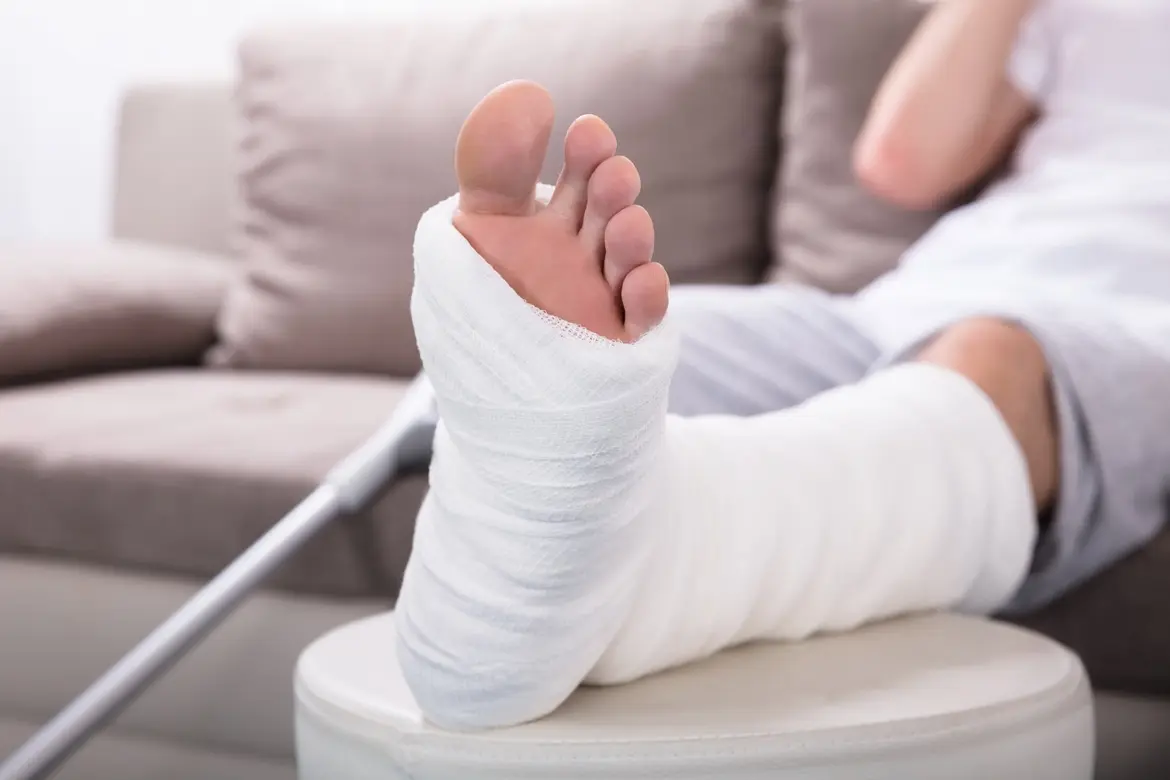Dr Seah Wee Teck Victor
Orthopaedic Surgeon


Source: Shutterstock
Orthopaedic Surgeon
The World Health Organisation reports 37.3 million falls that are severe enough to require medical attention occur each year. If your family member falls, do you know what to do?
Before anything else, if someone falls and is severely injured, or exhibiting any of the following warning signs, call for an ambulance immediately:
Your ankle is a joint where 3 bones meet. These bones, the tibia and fibula in your leg, and the talus in your foot, are encased at the point where they meet by a joint capsule. The synovial fluid inside this capsule helps the joint to glide smoothly when you move. Several ligaments help to stabilise the ankle. Your foot is made up of 26 bones that tend to be categorised into 3 areas: the forefoot, with your toes and metatarsals, the mid foot, and the hind foot, where the talus and the calcaneus (heel bone) are found. Throughout your foot are muscles, ligaments and tendons that help stabilise your foot and allow for complex movement.
Injuries to the feet and ankles are very common. Despite the fibrous ligaments and tendons that support your bones, the nature of the human body and the way we move around means that the lower limbs are susceptible to injury, especially as a result of a fall. In Singapore, around 30% of adults over the age of 60 have fallen more than once. Read on to understand more about fractures and how to treat broken bones.
A fracture occurs when a bone is broken. A bone can break either straight across a bone or across its length. It can also split a bone in two or shatter it, leaving the bone in several pieces.
Broken bones commonly happen as a result of falls, motor-vehicle accidents and sports injuries. They may also be caused by repetitive forces, like from running or from osteoporosis, which weakens bones due to aging.
A sprain occurs when the ligaments around the ankle give way. An ankle fracture, however, is when the bones in the ankle break, and this can also happen alongside tearing of the ligaments. Rolling, extending or twisting the joint, or applying extreme force, can all cause an ankle fracture. In a bad fracture, the ankle might appear deformed, or bone might protrude out of the skin.
Because there are so many bones in your foot, fractures to this area can range from fairly minor toe fractures to severe breaks to the larger bones such as the heel bone. Fractures to this area can occur when the bones are crushed, twisted or bent, or extreme force is applied. Simply kicking or tripping over something can cause a broken toe, but a fall can easily result in more serious breaks. Stress fractures are also common in your feet, but these are not caused by a one-off event like a fall. Instead, they develop over time, due to recurring stress and pressure.
If someone has fractured their foot or ankle, they are likely to feel the following symptoms:
If someone you know falls down, it is important to administer first aid. If they have fractured their foot or ankle, they are likely to feel pain or numbness in that area, and experience swelling and possibly bruising.
If you witness a fall, it is important to administer first aid to the person. Here are some immediate steps you can take to help:
If you think the foot or ankle is broken, take the person to the nearest Urgent Care Centre once you have completed the RICE process.
If someone does suffer from a broken foot or ankle, treatment and recovery will depend largely on the severity of the injury. The orthopaedic specialist will first perform a physical examination, looking at the foot or ankle for signs of a fracture. If they suspect a bone might be broken, they will most likely order an x-ray. If a fracture is confirmed, treatment might include:
Fractures to your feet and ankles can take 6 weeks or longer to recover, and fractures that require surgical intervention may take a longer time.
There are ways you can help yourself and your family to prevent fractures caused by falling.
The following are tips to prevent foot and ankle injuries:
If you and your family take care, painful injuries to your feet and ankles can often be avoided.
During a medical emergency in Singapore, you can also call +65 6473 2222 for an ambulance that will transport you to the nearest hospital or a hospital of your choice. Learn more about Parkway Emergency services.